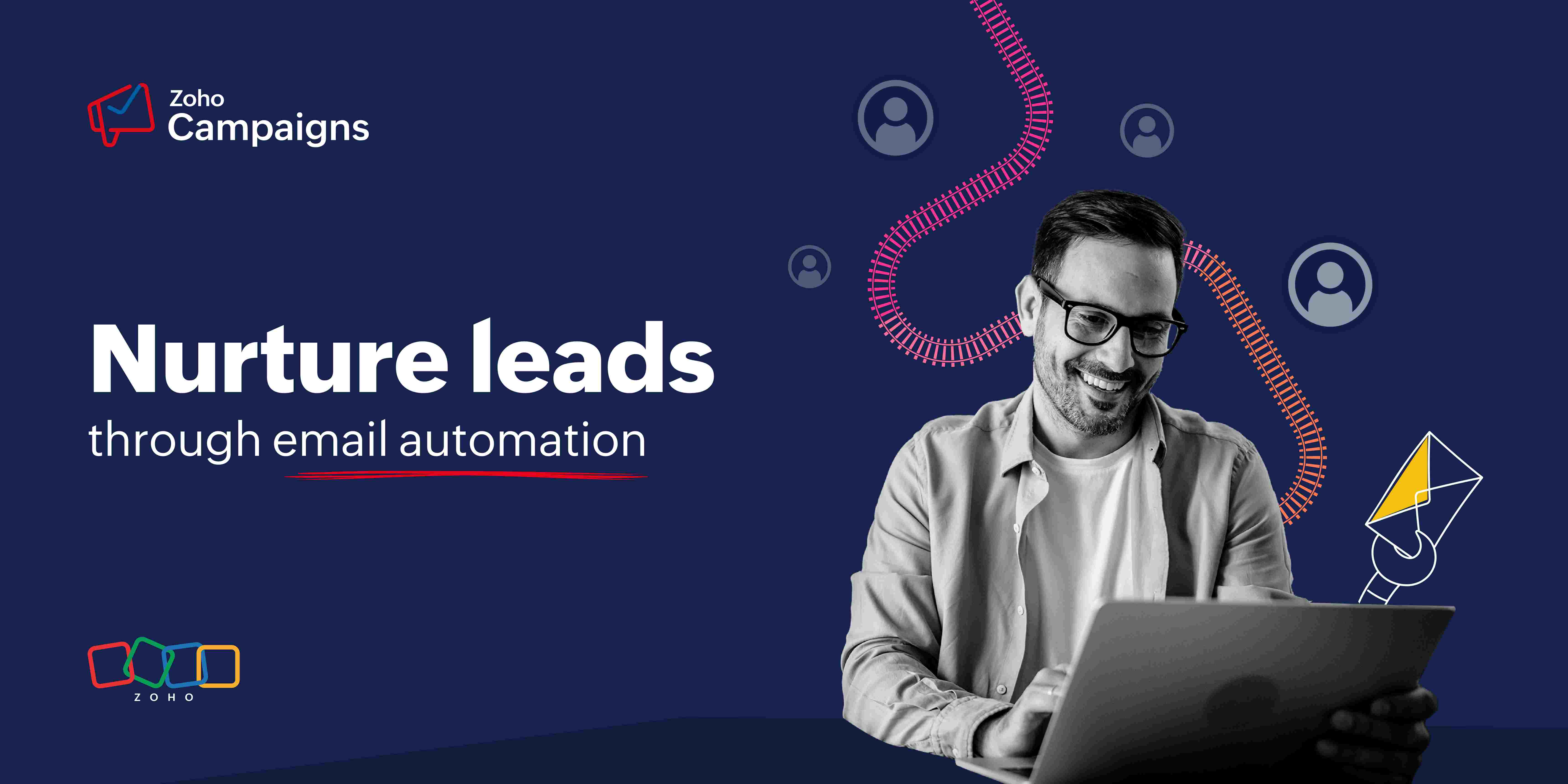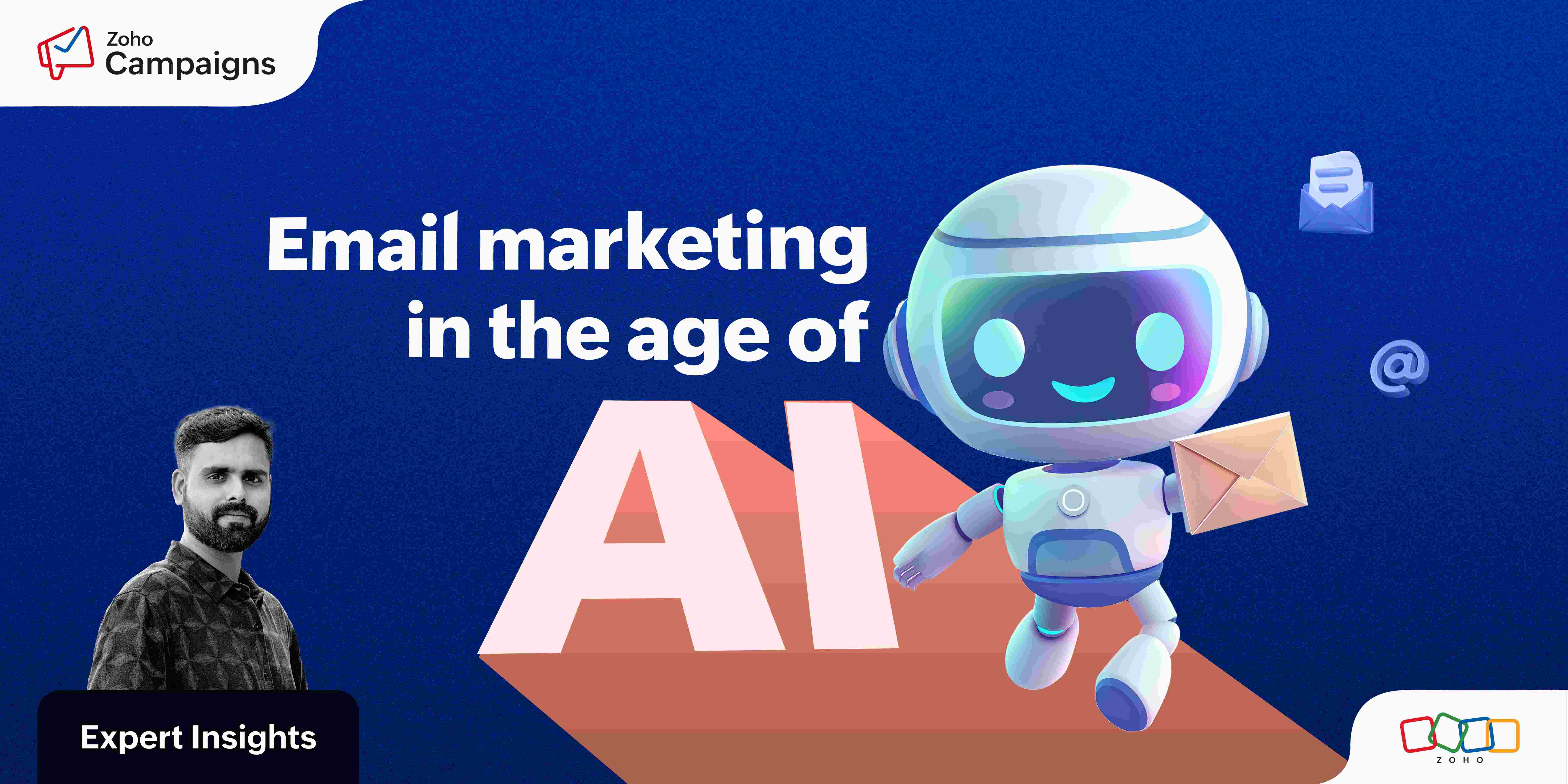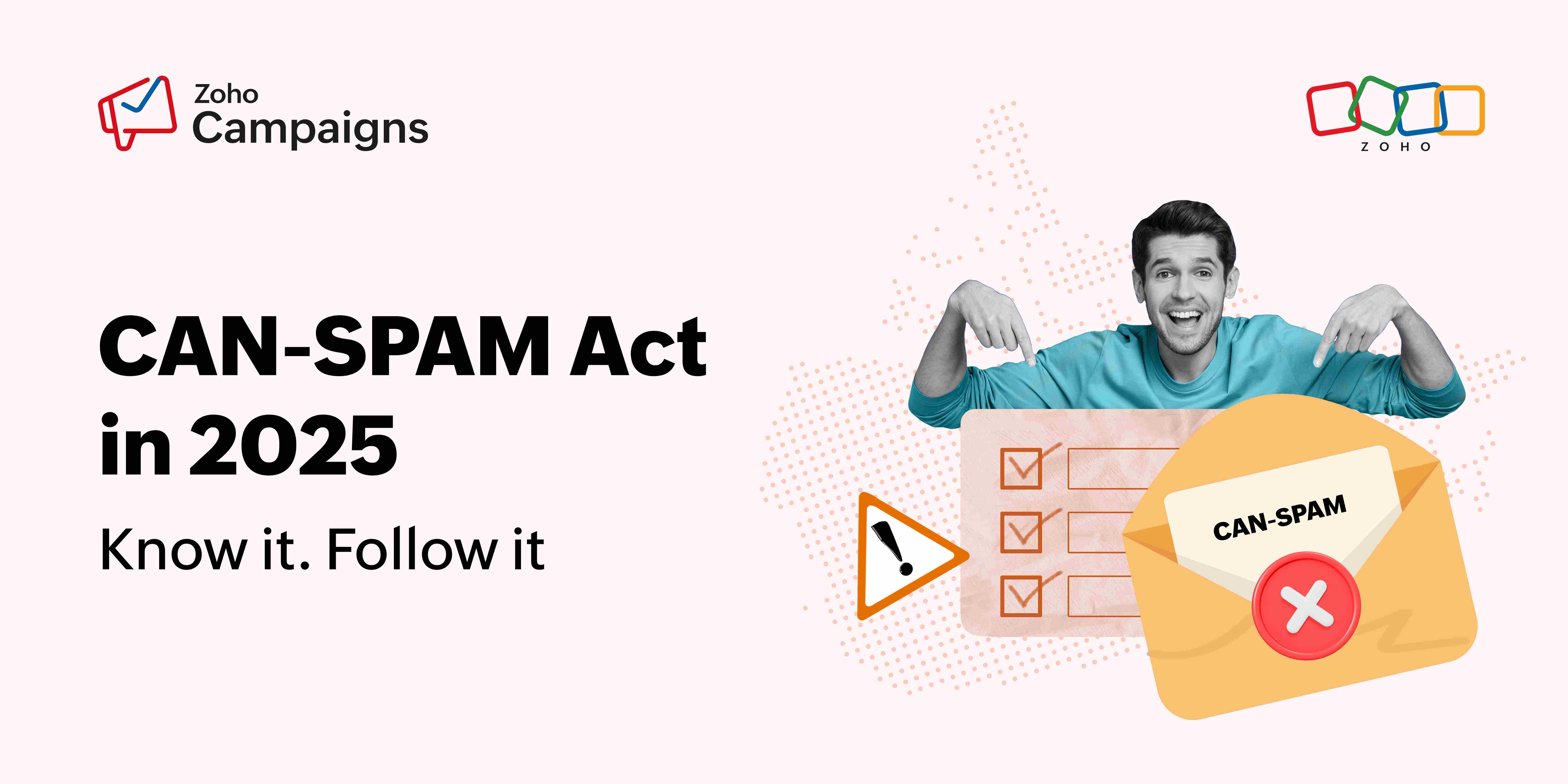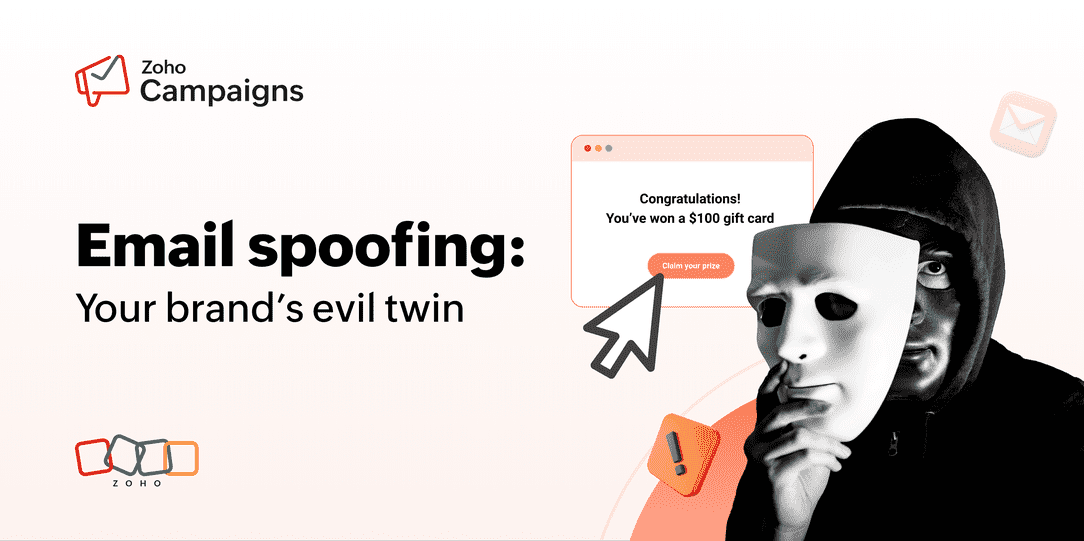- HOME
- Email Marketing
- A beginner's guide to nurturing leads through email automation
A beginner's guide to nurturing leads through email automation
- Last Updated : February 29, 2024
- 1.4K Views
- 4 Min Read

Imagine this: It's a crowded summer day at the beach. Fresh water alone just isn't cutting it, and people are feeling like their skin might melt off. Just then, you arrive at the scene like a superhero with your ice cream truck. Everyone buys ice cream from you. You save the day. The end.
Except, you most likely don't sell ice cream from a truck, and your customers probably aren't as eager to buy from you as a bunch of beach-goers seeking ice cream on a hot summer day.
Customer lifecycle stages
People typically go through multiple stages before deciding to make a purchase.
First, they recognize that they have a problem or need—then they begin looking for solutions. Upon identifying suitable ones, they evaluate their different options, probably looking at things like price, performance, features, and service.
Once they zero in on a solution, they'll try to get the approval of other stakeholders involved in the process. If they'rebuying, say, a vacuum cleaner for their home, they would check with their partner before buying. If the head of sales is buying a CRM tool for her enterprise, she would likely have to get the C-suite's approval before purchasing.
Even after a customer makes their purchase, they still evaluate the product based on its effectiveness in addressing their problem or need.
That's not to say that every customer goes through all these stages—or only these stages. Every customer of everycompany goes through their own unique journey from discovering the brand to purchasing to finally becoming an advocate for said brand (or in some cases even advocating against buying from the brand).
What is lead nurturing?
You can't just keep telling people how great you are and expect them to buy from you. Depending where customers are along their journeys, you'll have to create content that performs different jobs: drives traffic, builds thought leadership, builds a brand, initiates conversations, and wins deals.
Lead nurturing is the process of guiding your leads through the customer lifecycle and providing them with valuable content at each stage. You can nurture leads by understanding customers' needs and behaviors and creating content that addresses their specific pain points and challenges. The purpose of lead nurturing is to educate, guide, and nurture your leads to encourage them to take the desired action.
Why nurture leads through email campaigns?
Nurturing leads isn't about creating a bunch of emails and sending all of them one by one or just triggering a drip email campaign; it's about identifying customers' intents and sending contextual messages that take them through a journey that eventually increases your revenue.
While a lead may not buy from you today, that doesn't mean they won't buy from you ever. But to get them to buy from you, you have to stay at the top of their minds. The problem is that using advertisements—so as to stay top of mind—is difficult and expensive. And now, with third-party cookies going away, another major form of nurturing is also going away. It's in this scenario that automated lead nurturing emails serve as an affordable—yet effective—form of marketing.
Lead nurturing email campaigns are effective, customizable, and automatable. You don't build these campaigns out of thin air; you study the first-party data you have about your lead (data you've collected with consent or obtained directly from them) and use it to build different lead nurturing funnels suited to your goals and your audience's needs.
Why automate lead nurture email campaigns?
Automating lead nurturing campaigns enables you to nurture leads at scale; all you need to do is set up workflows according to your audience's behavior and ensure that your contacts are flowing into the right lists or segments. You can then monitor the performance of your email campaigns and iterate as required, and you can send this communication to as many leads as you like.
When you automate lead nurturing, you don't have to manually check how every user interacts with your emails and respond personally to each one. Instead, you set up workflows with lists/segments, timelines, triggers, and actions. Say you want to send a customer a feedback email a week after their last date of purchase; you can set the timeline to start seven days after the contact enters the "Purchased" list. Once the seven days are up, the trigger activates and the feedback request email gets sent.
6 must-have automated lead nurturing email sequences
1.Welcome: This is your chance to make a great first impression to maintain a long-lasting relationship. This email series sets the tone for what the relationship between you and the customer is going to be like. You can send one set of welcome emails to leads who've signed up for newsletters or come in through a lead magnet, and another sequence to paying customers. 
2.Product trial nurturing: Product trial signup leads don't always turn into paying customers. While your product's performance plays a huge role in the success of your conversions, it's also important that the marketing team send topicalemails that smoothen the nurturing process during the trial period. These emails can discuss how users can best use your product, show examples, explain which upgrades offer which extra features, or offer to give personalized demos—all of which serves to drive leads closer to conversion.
3. Customer win-back: What's better than one paying customer? Well, it would be more than one paying customer, but it's also a win if the same customer returns to purchase from you again. You can win them back by triggering a customer win-back nurture campaign, in which you remind them how awesome your product is, offer exclusive discounts, and give pre-launch access, among other things.
4. Purchase follow-up: Customers don't stop evaluating a company after purchasing from them. Following up with them after purchase shows that you care about their experience beyond the point of sale. These messages can include a thank you for their purchase, a request for feedback on their experience, or additional information on how they can get the most out of their purchases. By doing so, you not only ensure their satisfaction but also lay the groundwork for potential future engagements.
5. Abandoned cart email sequence: This type of email automation is most suited for ecommerce businesses where a customer adds items to the cart and then closes the app/website without purchasing. These emails serve as gentle reminders and can include incentives such as discounts, free shipping, or limited-time offers to encourage the customer to return and complete their purchase.
6. Loyalty building: Loyalty-building email sequences help ensure customer retention. They're ideal if your business wishes to nurture long-term relationships with your customers (and which business wouldn't like to do that?). But you don't necessarily have to use these emails to push more sales; you can also send educational emails, invites to exclusive events, or, more generally, deliver them value as a way of showing appreciation for their continued loyalty.
Ready to automate your lead nurturing campaigns?
 Vidhya Vijayaraghavan
Vidhya VijayaraghavanHi! I'm Vidhya, a storyteller and problem solver. I wholeheartedly believe that B2B content doesn't have to be boring.
When not writing or having a writer's block, you can catch me reading, puzzling, or volunteering.
I'm game for a conversation about anything, especially B2B SaaS marketing (and cats too!).



